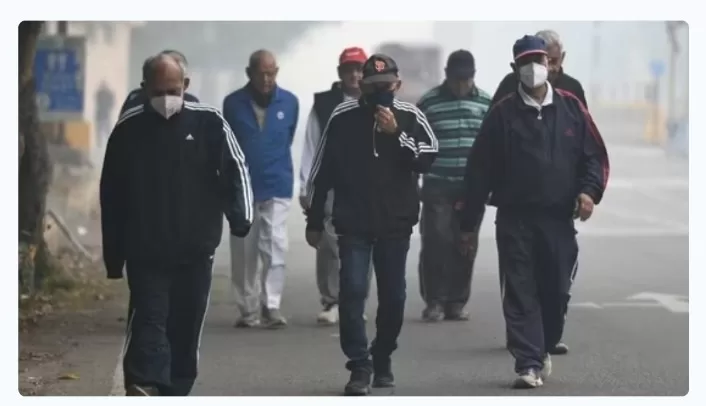The metropolis of Delhi awoke once again to confront a looming crisis as the air quality index (AQI) stubbornly clung to the ‘severe’ category on this Friday morning. Unfavorable meteorological conditions continued to impede the dissipation of pollutants, casting a fog-like veil across the National Capital Region.
According to the latest data from the Central Pollution Control Board (CPCB), key locations including Anand Vihar, RK Puram, IGI Airport, and Dwarka witnessed AQI figures surpassing the 400-mark at the early hour of 5 am.
At this juncture, the average AQI in Anand Vihar stood at a concerning 447, with PM2.5 persisting as the predominant pollutant. RK Puram reported an AQI of 465, IGI Airport at 467, and Dwarka at a staggering 490.
While the residents of Noida and Greater Noida experienced a degree of respite with air quality categorized as ‘very poor’ (still considered unhealthy), the situation in Gurugram, Haryana, remained dire with an AQI of 444 in Sector-51 at 5 am.
The 24-hour average AQI for Delhi, recorded at 4 pm daily, was 419 on Thursday, reflecting a continuous deterioration in air quality. Neighboring areas such as Ghaziabad, Gurugram, Greater Noida, Noida, and Faridabad also grappled with very poor to severe air quality conditions.
A joint project by the Delhi government and IIT-Kanpur revealed that vehicular emissions contributed approximately 38% to the capital’s air pollution on Wednesday, reducing to 25% on Thursday. Unfavorable weather conditions, characterized by calm winds and low temperatures, hindered the dispersion of pollutants, with no immediate relief anticipated in the coming days. The India Meteorological Department (IMD) suggests that improved wind speeds, expected from November 21 onwards, might alleviate air pollution levels.
Despite stringent measures implemented by the Delhi government, including the prohibition of construction work and the entry of diesel-heavy trucks into the city, the air quality continues to deteriorate. IQAir, a Swiss air quality monitoring company, ranked Delhi as the most polluted city in the world on Thursday, emphasizing the severity of the crisis. The concentration of PM2.5, a hazardous particulate matter, exceeded safe limits by six to seven times in various areas, posing severe health risks.
Health professionals caution that breathing the polluted air in Delhi is equivalent to the harmful effects of smoking around 10 cigarettes per day. Prolonged exposure increases the risk of respiratory problems such as asthma, bronchitis, and cardiovascular diseases.
In response to the escalating situation, the Delhi government established a six-member special task force to ensure the rigorous implementation of the Centre’s air pollution control plan, GRAP (Graded Response Action Plan). Lieutenant Governor VK Saxena criticized the AAP governments in Punjab and Delhi, emphasizing that the solution to the pollution crisis lies within the city itself.
The struggle against Delhi’s persistent air pollution crisis continues, with residents grappling with severe health hazards and the authorities intensifying efforts to curb the escalating environmental threat.




